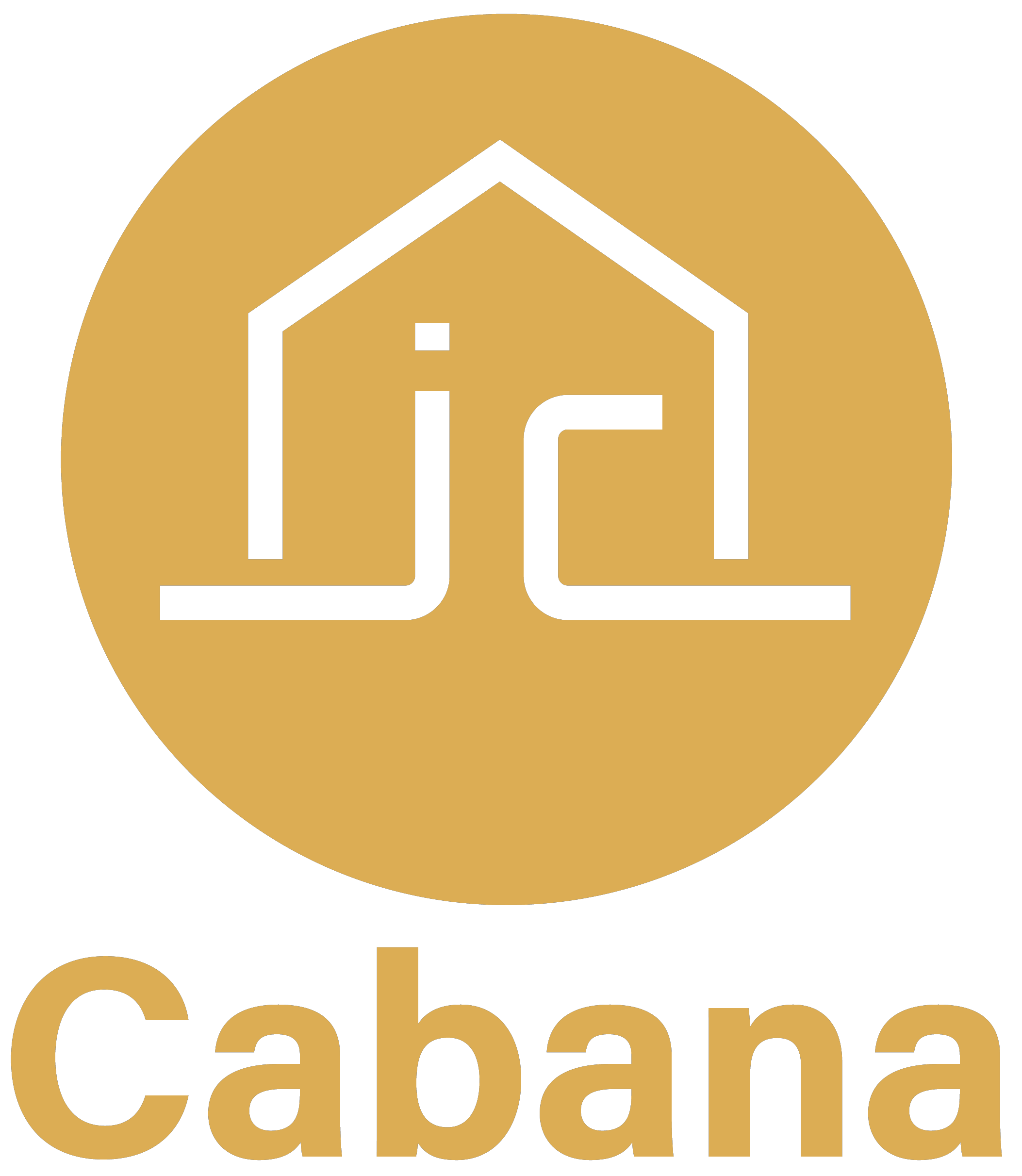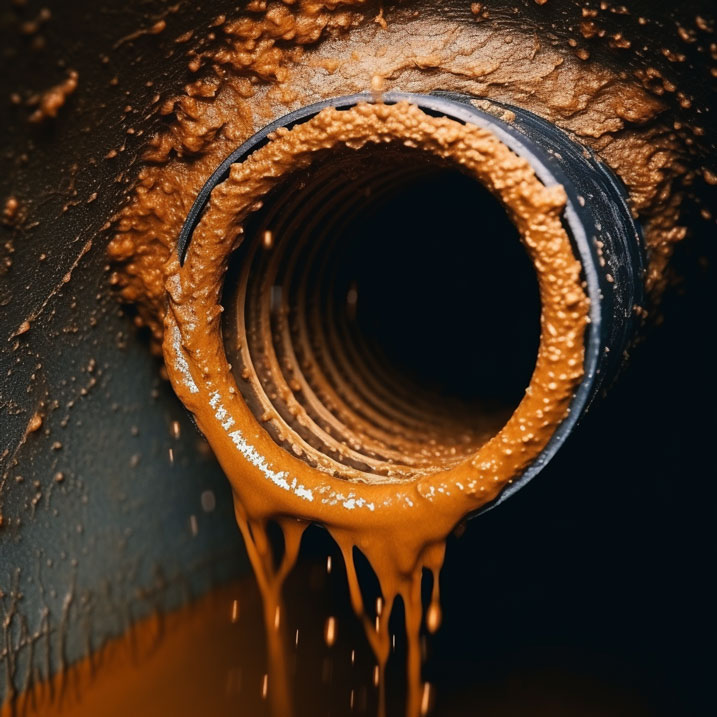Iron ochre is a reddish-brown, gelatinous substance that forms in soils and drains containing ferrous iron. It is a problem particularly prevalent in parts of Quebec and requires careful management to prevent clogs, deposits, and water damage.
What is Iron Ochre and How Does it Form?
Understanding the Formation of Iron Ochre
Iron ochre forms as ferric oxide combines with water and ferrous iron, oxidizing the iron and creating the characteristic reddish color. Iron ochre requires low oxygen conditions, which are typically found in subsurface drainage, to form.
Consequences and Effects of Iron Ochre in Basements
Iron ochre can cause significant water damage when it clogs basement drainage systems. The slimy consistency of the substance can restrict water flow and lead to high humidity levels. As a result, foundation walls can deteriorate, paint can peel, and mold and mildew can grow.
How to Eliminate Iron Ochre Deposits from Drainage Systems?
The elimination of iron ochre deposits from drainage systems requires careful attention and a range of techniques. These include the installation of French drains and concrete slabs, as well as using chemicals to break down the sludge. Homeowners can also install sump pumps and dig ditches away from the basement to help mitigate the presence of iron ochre.
Managing Bacteria in Iron Ochre Deposits
Identifying the Presence of Iron Bacteria in Soil and Water
Iron bacteria can often be found in iron ochre deposits, and their presence can pose a hazard. To detect the presence of iron bacteria, homeowners should look for symptoms such as slimy, reddish-brown substances in water samples or a rotten egg smell.
Preventing the Chemical Reaction Leading to Iron Ochre Formation
The chemical reaction that leads to iron ochre formation can be prevented by limiting the amount of water in the soil. This can be done by redirecting water away from the foundation walls and ensuring that subsurface drainage is properly installed and maintained.
Natural and Chemical Solutions to Manage Iron Bacteria
Natural solutions to manage iron bacteria include adding vinegar to water samples to lower the pH levels. Chemical treatments include the use of chlorine or hydrogen peroxide, although these should be used with caution as they can pose risks to the environment and human health.
Solutions for Iron Ochre Clogs and Deposits in Basements
French Drain Installation and Maintenance
Installing a French drain is a common technique used to prevent iron ochre clogs and deposits in basements. The drain consists of a gravel-filled trench that redirects water from the foundation walls. Regular maintenance of the drain is important to ensure its effectiveness.
Benefits and Limitations of Concrete Slab Installation
Another technique for managing iron ochre is the installation of a concrete slab in the basement. This technique limits the amount of subsurface drainage and can help prevent clogs and deposits. However, it can be expensive and difficult to install, and it may not be suitable for all homes.
Methods to Remove Iron Hydroxide Sludge in Basement Drainage Systems
Removing iron hydroxide sludge from basement drainage systems can be challenging. Techniques commonly employed include the use of chemicals such as hydrochloric acid or the mechanical removal of the sludge.
Impact of Iron Ochre on Infiltration and Groundwater Management
Link Between Iron Ochre and Chimney Infiltration
Iron ochre clogs and deposits can lead to chimney infiltration when water is redirected to the chimney instead of being drained away from the foundation walls. This can lead to significant water damage and the need for costly repairs.
How to Manage Groundwater Contaminated with Iron Ochre?
Managing groundwater contaminated with iron ochre requires careful attention. Techniques include using pumps to remove the contaminated water or using filtration systems to remove the iron ochre particles.
The Gelatinous Texture of Iron Ochre and its Impact on Drainage Systems
The gelatinous texture of iron ochre can pose significant challenges for drainage systems. The substance can clog pipes and restrict water flow, which can cause significant damage to foundation walls and other structures.
Legal Considerations for Iron Ochre Management in Quebec
Responsibility of Property Owners According to Régie du bâtiment du Québec
Property owners in Quebec have a responsibility to manage iron ochre deposits and prevent damage to their homes. According to Régie du bâtiment du Québec, homeowners must ensure that drainage systems are properly installed and maintained, and that any water damage is repaired promptly.
The Role of Professional or Contractor Holders of RBQ License
Professional or contractor holders of RBQ licenses have a key role to play in managing iron ochre deposits. These individuals have the training and expertise to properly install and maintain drainage systems and to repair any damage that may occur. They can also advise homeowners on the best techniques to manage iron ochre and prevent clogs and deposits. In conclusion, iron ochre presents significant challenges for homeowners in Quebec. However, by understanding the causes and consequences of these deposits, as well as the techniques for managing them, homeowners can take steps to prevent damage and ensure the long-term health of their homes.
here I could add a conclusion but let’s not for now
Q: What is iron ochre and what are its consequences?
A: Iron ochre is a reddish-brown, slimy substance that appears on the surface of concrete or foundation walls and slab of basements due to the oxidization of the iron present in the soil. The consequences of iron ochre are several, such as it affects the waterproofing of the basement, makes the house smell like rotten eggs, and creates deposits on the concrete slab which can make it weak and vulnerable to cracks.
Q: How does iron ochre form?
A: Iron ochre forms due to the chemical reaction between iron and iron bacteria present in the soil. When iron bacteria come in contact with the atmosphere, they convert the iron present in the soil into ferrous, which further oxidizes and causes the formation of iron ochre.
Q: Can iron ochre be eliminated?
A: Yes, iron ochre can be eliminated by preventing the chemical reaction between iron and iron bacteria. One can prevent the chemical reaction by either eliminating iron from the soil or eliminating iron bacteria from the soil.
Q: How can iron be eliminated from the soil?
A: Iron can be eliminated from the soil by installing a drainage system that directs the water and air away from the soil towards the drain of the property. One can also use chemical products to prevent the chemical reaction from taking place.
Q: How can iron bacteria be eliminated from the soil?
A: Iron bacteria can be eliminated from the soil by creating an environment which is not conducive to their growth. This can be done by improving the drainage system, reducing moisture, and controlling the pH level of the soil.
Q: How can one find out if their basement is affected by iron ochre?
A: One can find out if their basement is affected by iron ochre by looking for symptoms such as rotten egg smell, reddish deposits on the concrete slab or walls, and weak or cracked concrete. It is important to identify the presence of iron ochre as early as possible to prevent further damage.
Q: Is iron ochre a common problem in basements?
A: Iron ochre is more common in regions with high levels of iron in the soil. It is also more common in basement constructions where the location of the construction is such that it does not allow the natural water from the soil to drain towards the drain of the property.
Q: What are the effects of iron ochre on the construction?
A: The effects of iron ochre on the construction are several, such as it weakens the concrete and foundation walls, creates deposits on the concrete slab, makes the house smell like rotten eggs, and affects the waterproofing of the basement.
Q: What is Régie du Bâtiment du Québec (RBQ) and why is it important?
A: Régie du Bâtiment du Québec (RBQ) is a government regulatory authority that oversees the construction industry in Quebec, Canada. It is important to ensure that one hires a professional or a contractor holding an appropriate RBQ license to ensure compliance with safety standards and building codes.
Q: What are the preventive measures one can take to avoid iron ochre problems?
A: There are numerous preventive measures one can take to avoid iron ochre issues such as installing a good drainage system that directs water and air towards the drain of the property, controlling the pH level of the soil, and reducing moisture around the foundation.

